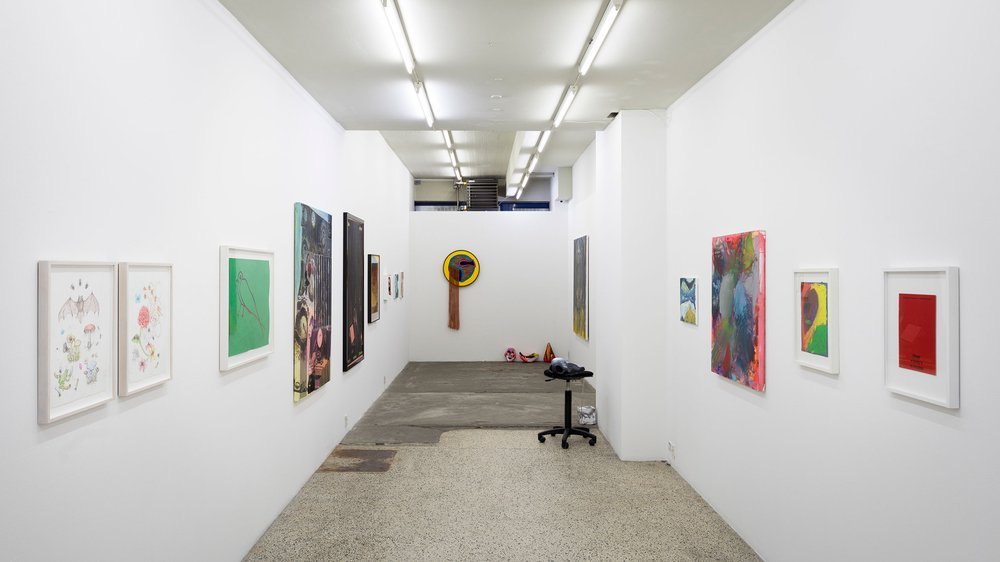MART-X and his work ‘Binary Memory From Anthropocene.’
*Archive Article: Originally published in the first print issue of Blacklisted Copenhagen on October 22, 2018
My first response to the work of French artist Mart-X was one of curiosity. It was one of vague familiarity, however not exactly knowing what I was seeing.
If you’re old enough to remember digital imagery pre-2000, then I will assume that you know what a Bitmap is. For those that are unfamiliar, according to the useful website Techterms.com, “A bitmap (or raster graphic) is a digital image composed of a matrix of dots. When viewed at 100%, each dot corresponds to an individual pixel on a display. In a standard bitmap image, each dot can be assigned a different colour. Together, these dots can be used to represent any rectangular picture.”
As I, myself, am half-way to a pension and a senior discount, I recognized the bitmap format. However, taking this visual binary language and translating it into a medium for artistic expression was something I had never encountered before-at least in the context of real artist expression and not internet memes. Questions of how and why this medium was chosen immediately came to the forefront of my mind.
On Connecting
Before we get to the interview, I must mention that there is a particularly intriguing mystery around the work of Mart-X. Not only in the work itself, but also in the utter mystery of the persona behind it.
In the writing of this piece, MART-X and I collaborated with the creative-based social-media platform Ello to run an artist invite for contributions. In the flood of submissions, Mart-X’s work popped out to me, but there was very little information other than an austere profile, absolutely no other online presence, and an email that appeared to no longer be active.
After nearly a month of various repeated tactics in trying to contact Mart-X, I finally got a response from what I assumed was a dead Gmail account.
Following all of our ensuing correspondence, Mart-X maintained their anonymity. For clarification, for the remainder of this article, I have used the pronoun ‘They,’ as I still have no idea about the gender of Mart-X.
Based on some of the answers to my questions, I believe this is intentional.
INTERVIEW
To start with, can you tell me where you are from, and your background as an artist?
As an artist, I choose to answer this question anonymously for the following two reasons.
First, because this choice is a posture relative to my artistic approach. Thus, I position myself as part of a global process and without border.
Secondly, I prefer anonymity because it’s a choice that puts the viewer in the foreground and the artist in the background of the work.
What interests me most is what a spectator feels and thinks of what I show him and what he can bring back. In this idea of interaction with the spectator, I would like to question researchers, philosophers, artists whose return of exchanges would complete the exhibition of my paintings.
You have a series of work entitled, ‘Binary memory from Anthropocene’. Can you tell me about this work?
What guides me and inspires my work today is the time in which we live, and some call it the Anthropocene. This is the current period when human activity has become a real earthly geological force.
In the manner of an archaeologist, I extract from our urban environment elements produced by man and in a state of decomposition. I break down these elements to fix and expose a very subjective memory of our present.
In the process of your work, you write that the “starting point of my creations comes from the capture of human productions impacted by the forces of nature and time (waste).” What are these human productions?
The creative process of my work is to try and capture the lengthy process of transformation in which a whole chain of human actions, material, technological and environmental, is involved (designers, machines, tools, inert and living materials, minerals, plants, etc …) and whose final product is impacted by, wind, humidity, sun, fungi, micro-organisms, etc.
You go on to say that you, “transform them in my turn to create subjective representations of this long process of transformation.” Describe this for me more about this in detail?
Then, in the same logic, in my turn, I impact these elements by transforming them with my digital tools to show kinds of living entities nourished by all this heritage.
What is your conceptual relationship with working in black and white and pixels?
I chose black for its metaphysical and conceptual dimension. My representations seek to dialogue with the present, past and future times. To clarify, the representation of my living entities try to resonate with the primitive animal drawings of our ancestors but also with unknown entities of another space-time.
I chose the pixel because it represents to me the mark and the graphic symbol of our time. Processed in black & white, it becomes, like the binary systems, the representation of languages and digital flows that have recently flooded our world like the blood in our veins. Finally, in a more philosophical way, it is a matter of putting in an image to the idea that everything is interconnected, that everything mixes and is transformed according to the relations of forces in presence.
And how and when did you begin developing your style?
There was a long process of pictorial research before stopping on my current style. In the beginning, all my canvases were in color, more abstract and in smaller formats. The work of the pixel in black & white on large format was the starting point of a new research which was more in line with my artistic purpose.
And with this idea that everything is in everything, technology is part of my digital artworks just like all the elements that constitute us and surround us. To express this conceptual principle and to reinforce my primitive pictorial approach, it seems to me more appropriate to ink my representations on simple canvases rather than to animate them on digital screens.










